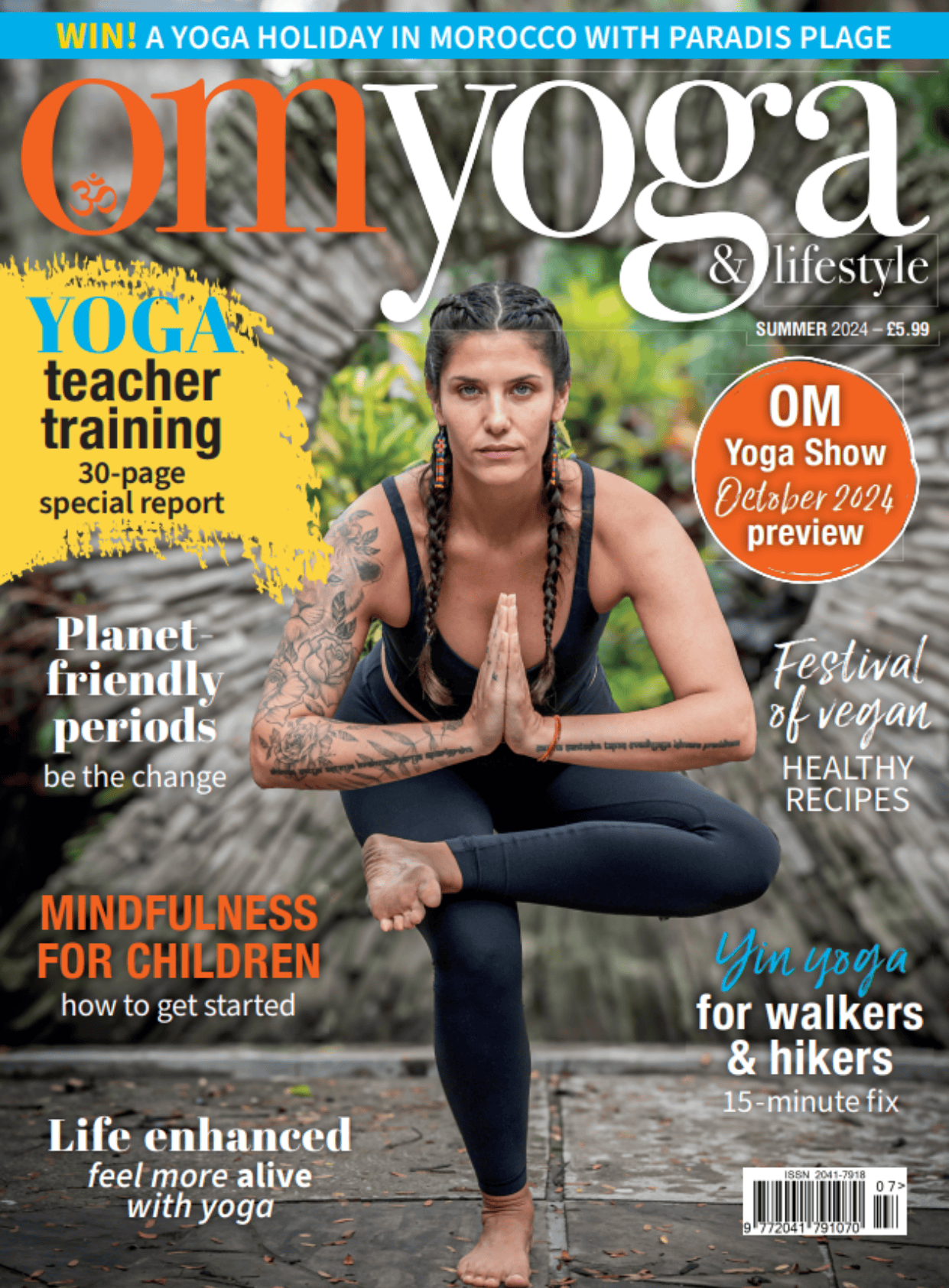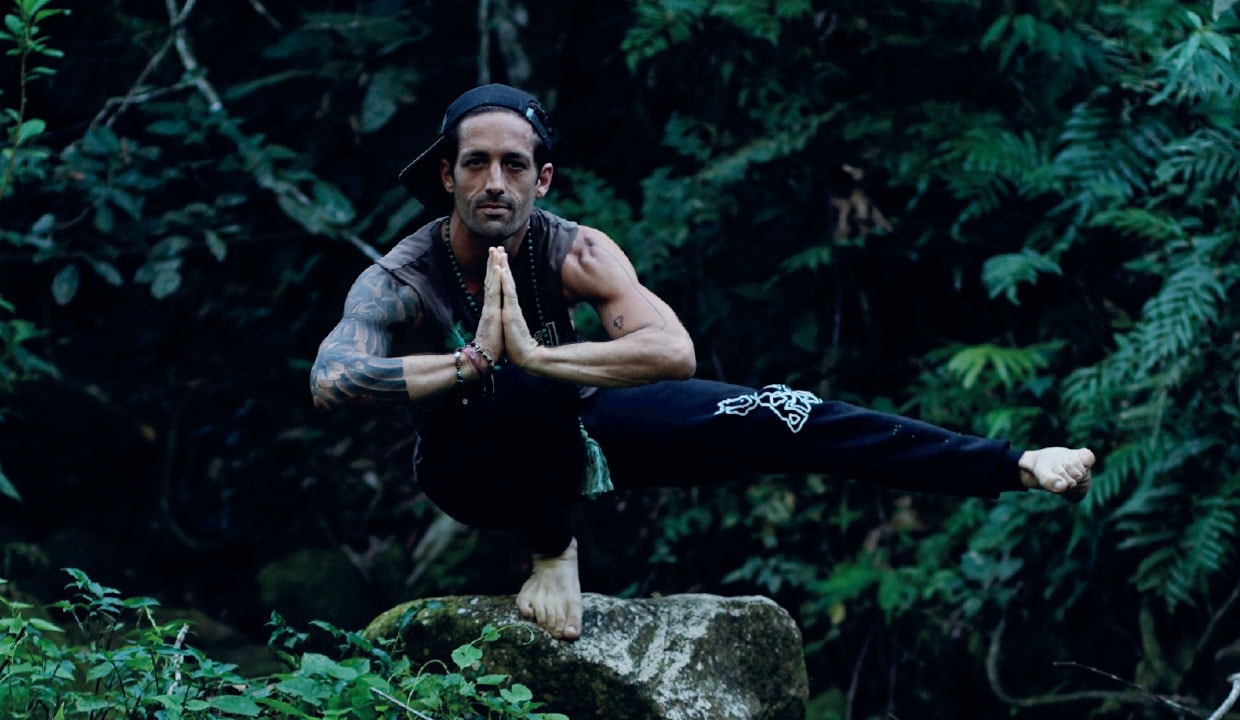
OM meets...
Vincent Roy
Vincent Roy’s story attests to yoga’s transformative power. This Canadian globetrotter, now residing in the heart of the Amazon rainforest, wasn’t always a yoga teacher. His path to creating Moksha Yoga Amazónica, a yoga school located in the Amazon jungle of Peru, is a captivating tale of exploration, self-discovery and revealing the transformative power of yoking breath with movement.
How did you first get into yoga?
My journey to yoga wasn’t a straight line. Growing up in Montreal, I was all about sports – ice hockey and soccer were my go[1]tos. But at 15, I was introduced to the world of martial arts and pranayama (breathwork) forms in Kung-Fu. There was something about my teacher’s movements, particularly the animal forms, that fascinated me. Witnessing the connection between breath and movement sparked a curiosity that would later blossom into a full-fledged yoga practice. Fast forward to college, when a relaxation techniques elective class offered a taste of yoga and I did my first Sun Salutation. However, it wasn’t until landing in Japan in my mid-20s that I truly delved into the practice. My initial plan was to take up karate, but fate had other plans. Meeting a partner who practiced yoga, I found myself drawn to the serenity of morning kriyas, mantras and meditation, alongside deepening my asana practice.
What does yoga give you personally?
Yoga has been a constant source of growth, both physically and spiritually – from the bustling streets of Tokyo to deep sea diving in the ocean, to the vibrant heart of the Amazon rainforest. It’s a practice that has gifted me a sense of balance, self-awareness and inner peace that transcends external circumstances. Whether navigating the challenges of a demanding job or exploring the depths of the ocean as a saturation diver, yoga has been my anchor, reminding me of the strength and resilience I possess within. On the mat, I have learned to navigate the flow of sensations and to honour my body’s limitations, gently pushing past self-imposed boundaries; while, beyond the mat, yoga has taught me the art of being present, of letting go, and of embracing life’s challenges with grace and equanimity. I see yoga practice as a path to self-realisation, self-knowledge, and self-actualisation, creating space for deeper levels of consciousness to emerge. Through yoga I have found solace and a profound sense of connection to something greater than myself.
Tell us how Moksha Yoga Amazónica came about?
I quit my cushy office job at 30, feeling I wanted more from life than what I could only describe as ‘typing my life away at a keyboard’. I craved moving my body beyond yoga classes or gym workouts. After years of globe-trotting and island-hopping, teaching scuba diving and working as a saturation diver through my mid-30s, I found myself in the Amazon jungle in 2014. The region’s rich biodiversity and connection to nature resonated profoundly for me with the principles of yoga, creating the perfect backdrop to deepen my yoga practice. I felt a deep connection to the rhythms of nature and began aligning my yoga practices with the sun’s cycles; an ever-longer meditation at dawn as the mist comes out through the valley followed by an active yang Vinyasa flow, and turning off electronics and stopping work at 4pm to prepare myself for an evening reflective meditation and Yin yoga practice. It was in this mood that I decided to complete my 200-hour yoga teacher training (YTT), and began thereafter teaching asana classes to the locals of Moyobamba. Moksha Yoga Amazónica was born out of a desire to teach yoga full-time and share the liberating teachings of yoga with others. It emerged as a sanctuary where individuals could not only deepen their physical practice, but also explore the philosophical and spiritual dimensions of yoga and reconnect with their true selves.
What can people expect when they visit Moksha Yoga Amazónica at Kantu Garden Lodge?
Imagine waking up to the sounds of the rainforest, surrounded by lush greenery and exotic wildlife. This is the scenery that sets the stage for your Moksha Yoga Amazónica experience at Kantu Garden Lodge. Our 200-hour YTT and retreats are immersive journeys that delve into the core principles of yoga – from the philosophy to the physical practice and everything in between. Expect a blend of vigorous Vinyasa flows alongside gentle, restorative sequences, all designed to cultivate a deep connection between your body, mind and breath. Our offerings go beyond the yoga mat. We dissect proper body alignment and weight distribution to prevent injuries and ensure a safe and sustainable practice, but equally important is the integration of Jnana (the yoga of knowledge), Bhakti (the yoga of devotion), and Karma (the yoga of action or selfless service) into our daily lives. Our goal is to foster a holistic understanding of yoga, one that transcends the boundaries of the mat and permeates every aspect of our lives.
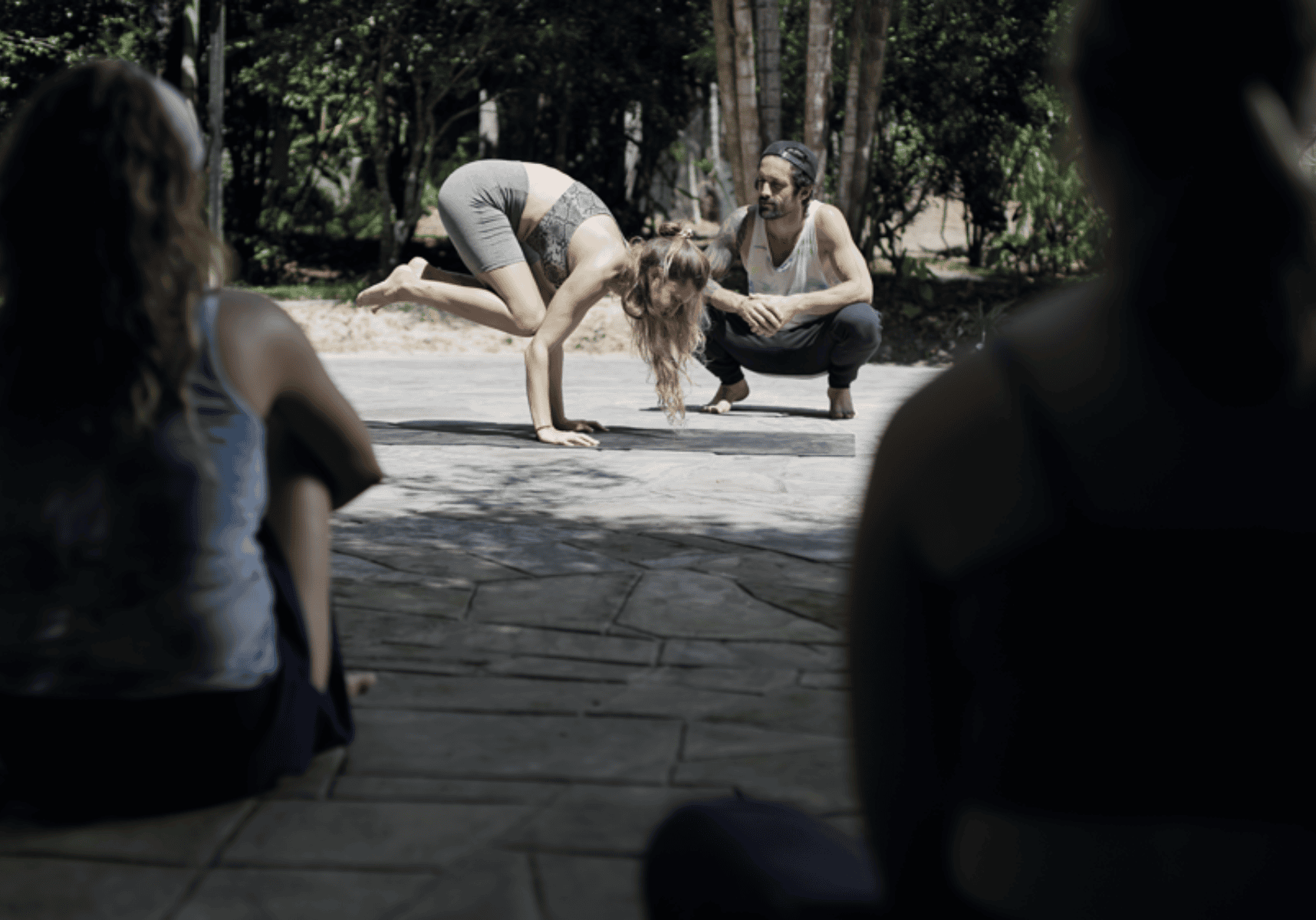
Yoga for Living
Moksha Yoga Amazónica founder Vincent Roy shares some top tips for incorporating yoga into ordinary life and mundane activities
Yoga isn’t bound to the confines of the mat, a studio, YTT or retreat; it can be integrated into our daily lives, transforming even the most mundane activities into meditative experiences and sacred rituals.
- Begin by bringing mindfulness to your breath throughout the day. Take a few moments to pause and focus on your inhalations and exhalations, allowing your breath to anchor you in the present moment. Take a few deep and long breaths each day to improve your focus and energise your body.
- Bring awareness to your everyday movements, whether it’s walking, climbing the stairs or washing dishes. Move with intention. Consciously engage your muscles, maintain proper body alignment and incorporate yoga postures and stretches into your daily routine. For example, you can practice backbends or forward folds while waiting for the coffee to brew, or engage in conscious breathing exercises while sitting at your desk. These small practices can help alleviate tension, cultivate body awareness and prevent unnecessary strain or injury while improving focus and promoting a sense of calm amidst the demands of everyday life. Swap multitasking for mindful focus. This simple shift allows you to truly be present in each moment.
- During periods of stress or anxiety, utilise your breath as a natural tranquiliser. Take slow, deep breaths, inhaling calmness and exhaling tension. This activates your body’s relaxation response, countering the stress[1]induced fight-or-flight. As your body relaxes, your mind becomes clearer. Combine this with mindful tension release – clenching and releasing fists, rolling shoulders, softening the jaw. These small movements melt away stress, leaving you centred and grounded. The beauty lies in being able to practice this anywhere, anytime, equipping you with powerful tools to navigate stress and cultivate inner peace.
- Transform meals into mindful rituals: savour each bite, noticing colours, tastes, textures and aromas. Put away your phone and focus solely on nourishing your body. Chew slowly, experiencing flavours fully. Tune into hunger and satiety cues, eating until comfortably satisfied. Slowing down allows neurological signals to register fullness before overeating. These practices cultivate mindfulness, presence and appreciation, all central to yoga. They disrupt mindless, emotional eating habits and foster deeper bodily wisdom. Eat with gratitude and awareness to develop a healthier relationship with food.
- Cultivate an attitude of gratitude by intentionally taking a few moments each day to appreciate the simple things in life – the beauty surrounding you, such as a sunrise or the laughter of a loved one. By weaving these moments of gratitude into the fabric of your day, you develop a positive mindset that fosters inner peace. This practice, rooted in the yogic principle of Santosha (contentment), isn't about ignoring life's challenges but rather finding joy in the midst of them, creating a foundation for a more fulfilling life.
- Finally, approach each interaction and encounter with a spirit of compassion, kindness, and non-judgement. This embodies the yogic principles of ahimsa (non-violence) and karuna (compassion), which are central to the deeper aims of yoga. By meeting others with an open heart and suspending harsh judgments, you create space for genuine connection and personal growth, key elements of the yogic path.
By incorporating these simple yet profound practices, you can transform your ordinary day into a continuous expression of yoga, cultivating presence, mindfulness and a deeper connection with yourself and the world around you.
Find out more about Moksha Yoga Amazónica at: mokshayogaamazonica.com
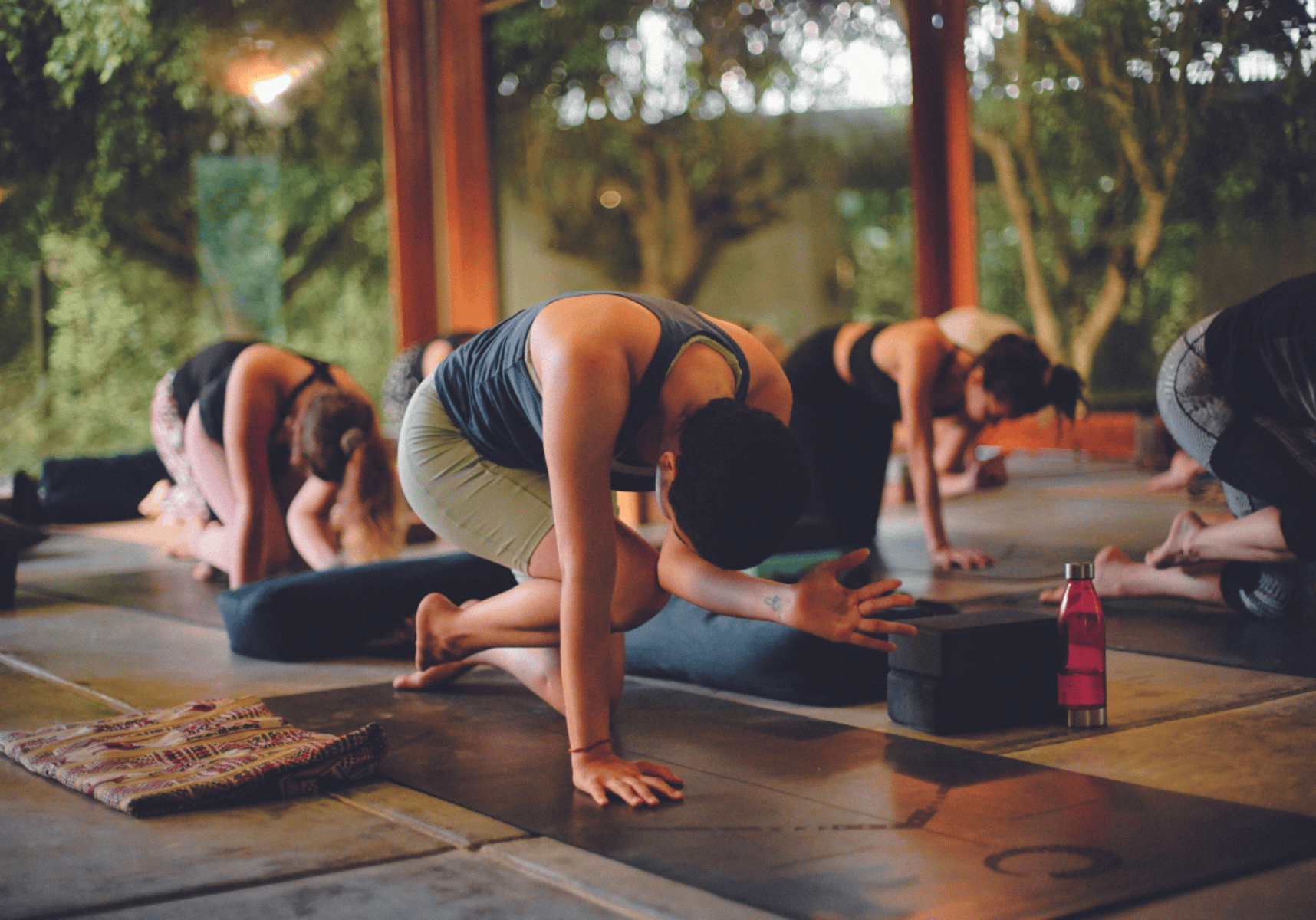
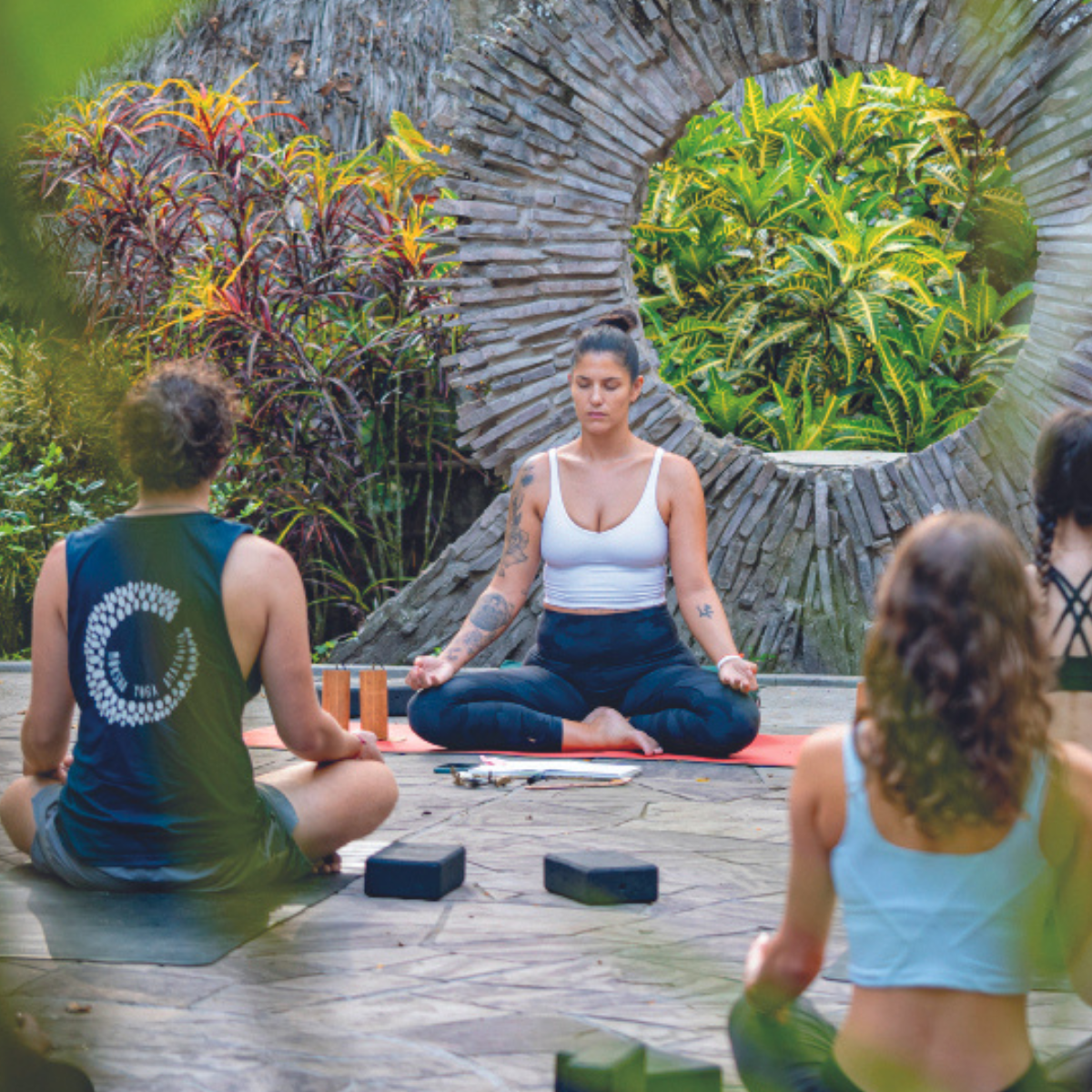
MICHELLE LEHEGARATE
Quick Meet
Meet our cover model, Michelle Lehegarate, one of the talented team of instructors you can find at Moksha Yoga Amazónica
How would you describe your own teaching style?
I would describe my teaching style as authentic. This isn’t to say that I teach an authentic lineage or my yoga teaching is straight from India, but that I teach from my own lived experience of yoga. When I offer students pose modifications I often refer to how something feels in my own body, on the off-chance that they too experience the pose in a similar way, and in hopes that they'll be a little kinder to themselves and start to release their own expectations of how a pose is ‘supposed’ to be and instead connect deeper to their own body. I also reference my own injuries, and have a serious laugh when I mess up a left or right, or inevitably fumble a word, especially when it's an early morning class.
Three words to describe your class?
Three words to describe my class would be: inclusive, supportive and energetically powerful.
Yoga career highs so far?
My yoga career highs so far aren’t measured in a one-off. I've led almost 30 YTTs now and still the highs of my career are witnessing the 'a-ha' moments of my students. When they have that breakthrough, and connect with something so profoundly, so intensely, that you can see they're about to make big changes in their lives. Half the time it has nothing to do with asana. That's the gold for me.


